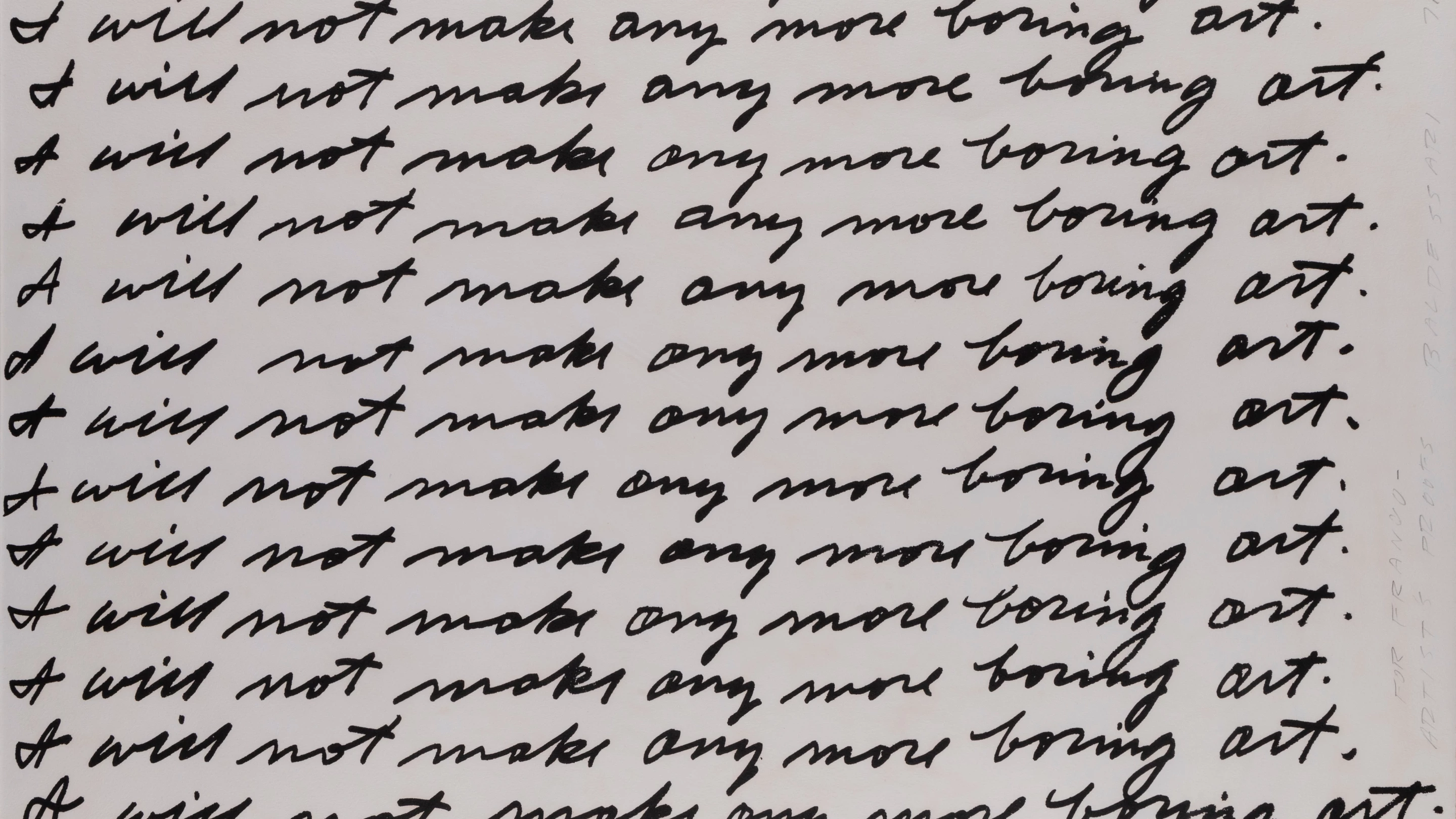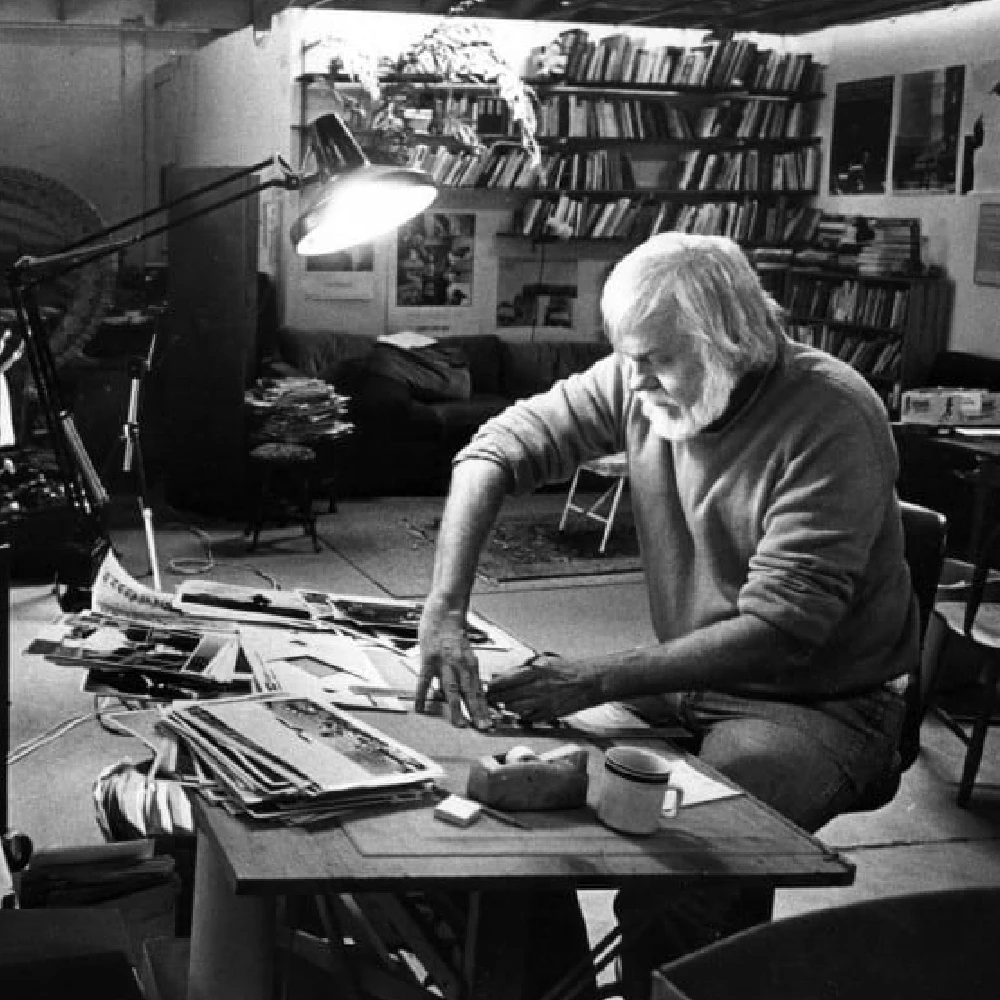John Baldessari was born in National City, California in 1931. He received his BA and MA from San Diego State College, CA and studied at University of California, Berkeley (1954-55); UCLA (1955); Otis Art Institute 91957-59); and the Chouinard Art Institute, LA. He was a pioneer of American conceptual art. Through his rejection of traditional notions and boundaries, and his expansion of our understanding of what art can be, he became one of the best-known artists of our time. Baldessari profoundly impacted several generations of visual artists – from David Salle and Jack Goldstein to Cindy Sherman and Barbara Kruger.
If there was a connecting thread in Baldessari’s multifaceted oeuvre, it was his willingness to grapple with the clichés and expectations that shape a viewer’s perception of a work of art. Baldessari’s Cremation Project (1970), when he rejected the painted image by ceremonially burning all the paintings that he had made between 1953 and 1966 (and could still access), verges on the legendary. Other, equally well-known works show the artist directing his incisive humor against conceptual tropes as well. One example is his performance and video I Will Not Make Any More Boring Art (1971), in which he copies the titular sentence over and over in a ruled notebook in what amounts to a kind of schoolboy punishment. Viewers of Baldessari Sings LeWitt (1972), another example, are treated to the artist’s rendition, in song, of Sol LeWitt’s thirty-five Sentences on Conceptual Art (1968).
Baldessari created a wide range of different works in his long career, with output that included film stills strategically adorned with colored dots, art-philosophical jokes in which text about the image replaces the actual image, motifs serially reconstructed as monochrome Pantone color plates and much more. His art relied on the insight that pictures are constituted first and foremost in the minds of viewers. The artist often pointed to the influence of the structuralism of Claude Lévi-Strauss, as well as the French New Wave, and in particular the films of Jean-Luc Godard. Key strategies of his work included the associative connecting of words with other words, the juxtaposing of images and jolty combinations of words and pictures. He was interested in the spaces between these juxtapositions, the elements that are still missing or remain hidden. Baldessari was particularly attuned to the gaps that develop between the meaning of individual elements and how the viewer fills them in with his or her own subjective take on the work.
In this way, Baldessari challenges the passive gaze and the beholder’s sense of security. His work toys with the desires and expectations of viewers, appealing to their imaginations, their memories and their tendency to read a story into every image. His pieces lead to a point where understanding seems within grasp but still remains elusive, disappointing the viewer’s desire for narration and urging them to come up with their own story. Characterized by an unshackled and uninhibited take on art and the world in which it is made, his oeuvre shimmers with a cheerful lack of concern, a tidy laconicism. Yet it also has a surprising urgency, an unexpected emotional impact, a sudden poetry, and an uncompromising freedom. Anything resembling preconceived meaning, his works seems to say, should be pushed aside, and replaced with an invitation to the viewer to think anew.

